Blockchain
Blockchain Technology – DeFi Adoption Requires Quick Blocking

International companies use distributed led technology. Instead, try to improve efficiency in areas. Such as international payments and the clarity of purchases. That blockchain can replace slow paper processes and improve security.
However, many of the platforms used today are well-designed. Networks are blocked by traffic too fast. Most likely, this leads to latency problems, finally, in an unsatisfactory user experience.
According to McKinsey’s 2019 report, there are now more than 20 billion connected devices worldwide. First, everything “requires data management, storage, and retrieval.” However, the blockchain design is not equipped to handle this massive wave of data, forcing networks to maintain high speed and storage capacity.
Blockchain technology. Ensuring sustainability
Transaction speed is critical to blockchain adoption and sustainability. However, performance should be interrupted.
So far, developers have taken a two-prong approach. The activation of the Beacon Chain mainnet sets the ball rolling for Eth2 and Serenity. A full transition may happen in the next two years. However, the eventual rollout can be fast-tracked. Meanwhile, Vitalik Buterin and the Ethereum Foundation are focused on Layer-2 solutions like Optimistic Rollups says – Bohdan Prylepa CTO of Prof-it Blockchain Ltd and COO in Bitcoin Ultimatum.
Several factors can delay verification. Probably, the main reason is an overcrowded network. When more users submit transactions, there will be long lines of verification locations. This is because miners or regulators operating the network do validation. As evidenced by the publication of the public book. This means that this process reduces the risk. Similarly, it can also provide transaction speed, especially if there is a lot of traffic.
Developers are also trying to figure out how to keep blocks on the network permanently. A significant increase in storage needs can cause the network to slow down and become unstable. The protocol requires member nodes so that you can transfer and download the chain in a short time.
The blockchain trilemma is a technical challenge between downtime, power distribution, and security. Engineers can accomplish either of these tasks but must sacrifice the third.
Automatic authentication has become increasingly important for use. Because street power naming competes with traditional market solutions. For example, there is an urgent need for high bandwidth in the financial services industry, low latency networks, which may be the same as Visa and MasterCard networks’ maximum bandwidth. Which process of tens of thousands is done in a second.
Meet user expectations
Over the past year or so, we have seen several developments. Instead, they draw closer to the truth. Two examples are improvements at the protocol level, as a combination of signature and pipeline installation of block suggestions. Signature integration allows validators with multiple Boneh-Lynn-Shacham cryptographic keys to combine all signatures into a single integrated signature and send as one peer message. When you install the block application pipeline, the validator starts proposing a new block, as you can see, immediately after collecting two-thirds of the signatures. This means that the process of raising a new block and gathering the last third of the signatures takes place simultaneously.
The result of this development is a significant reduction in block termination time. Of course, it can take up to one or two seconds to activate the leading network. The two-second termination is a disturbing, fast-moving aspect of the digital commodity industry as it takes a few minutes to secure Bitcoin (BTC) and Ether (ETH) high prices. Comparison: this is the speed that meets the expectations of regular users. Who uses plastic cards in the store.
Blocking Blockchain
Another solution many blockchain projects are trying to implement is called sharding. The sharding method divides the database into smaller pieces. So that the nodes can process transactions quickly and update the standard register in real-time. The reduction is widely accepted as the best solution for achieving blockchain crashes because it increases transaction value per second and requires less node memory.
Reducing the solution solves the blockchain bloat problem without sacrificing power-sharing and security. Constipation means the difficulty of getting enough memory and receiving a large amount of accumulated information.
Other solutions are also being tested, although they have not yet been implemented on the main net. Danish investigators have come up with a solution. It, therefore, includes a different level of validation to reach the end. As seen, it has been slightly aligned with the standard blocking verification process. However, this has yet to be proven to apply to the main net.
Something is needed. Fast deployment opens up opportunities for DApp developers. Maybe to create the fastest and easiest apps for real action. For example, Brian Brooks, acting head of the Office of the Treasurer, recently wrote to the Financial Times about his view of “autonomous banks.”
Trilemma Solution
They reduce the blocking time they can and should not come because of blockchain security. Solving this problem means making sure that the allocation of power to the network remains a priority. The solutions presented here suggest that a blockchain project can provide power allocation in specific areas—also, lightning safety and speed guarantee.
Due to the applications used, it is faster. Of course, the faster response also leads to higher user satisfaction and retention, which we want to make the most of using the latest Web 3.0 applications. So, wait for seconds or minutes and even confirm the transaction. Technology is becoming widespread throughout the world. Shared registries should provide compelling examples of use. Also, improve key performance indicators and increase return on investment.
Blockchain
Cardano Founder Charles Hoskinson Pushes Stablecoins as the Future of Digital Commerce

Cardano founder Charles Hoskinson has renewed his push for stablecoins, arguing they represent the most practical path toward real-world crypto adoption. In a recent post, Hoskinson described stablecoins as the digital asset class best suited for everyday commerce, citing their low fees, minimal friction, and predictable value.
His comments arrive as Cardano accelerates efforts to strengthen its decentralized finance ecosystem, positioning stablecoins as a core pillar of the network’s long-term growth strategy.
Stablecoins as the Backbone of Everyday Payments
According to Hoskinson, stablecoins solve one of crypto’s most persistent challenges: usability. While volatility has historically limited the use of cryptocurrencies for routine transactions, stablecoins remove that uncertainty by maintaining a consistent value.
He emphasized that regions already using stablecoins at scale experience smoother payments, faster settlements, and dramatically lower transaction costs. From his perspective, these characteristics make stablecoins far better suited for commerce than highly volatile assets.
Hoskinson framed stablecoins not just as payment tools, but as foundational infrastructure for digital economies. He argued that a unit of account, medium of exchange, and store of value for everyday transactions must remain stable to gain mainstream acceptance.
Cardano’s Stablecoin Strategy and Treasury Commitment
Cardano’s leadership is backing this vision with concrete financial commitments. The Cardano Foundation has outlined plans to allocate up to 50 million ADA toward boosting stablecoin liquidity across the ecosystem.
This treasury-backed initiative aims to ensure sufficient depth and reliability for stablecoin trading, lending, and payments. By improving liquidity conditions, Cardano hopes to attract developers, merchants, and users who require dependable settlement assets rather than speculative instruments.
The move also reflects Cardano’s broader shift toward practical adoption. Instead of focusing solely on theoretical scalability or research milestones, the network is increasingly prioritizing user-facing financial applications that can compete with traditional payment systems.
Impact on Cardano’s DeFi Ecosystem
Expanded stablecoin availability could significantly reshape Cardano’s DeFi landscape. Stable liquidity allows decentralized exchanges, lending platforms, and payment services to operate more efficiently, while reducing slippage and risk for users.
Developers benefit as well. Reliable stablecoins make it easier to design financial products such as savings protocols, payroll systems, and merchant tools without exposing users to excessive volatility. Over time, this could accelerate the development of Cardano-native DeFi applications and increase on-chain activity.
Historically, other blockchain ecosystems have seen higher transaction volumes and deeper liquidity after stablecoins reached critical mass. Cardano appears to be following a similar path, using stablecoins as a catalyst for broader network usage.
Market Implications for ADA
From a market perspective, stablecoin integration may also support ADA’s long-term value proposition. Increased DeFi activity typically drives higher transaction demand, staking participation, and ecosystem engagement.
While stablecoins themselves are designed to avoid price movement, the infrastructure built around them often strengthens the underlying blockchain. Investors are watching closely to see whether Cardano’s stablecoin strategy translates into sustained growth across usage metrics.
Regulatory Alignment and Long-Term Outlook
Hoskinson also suggested that stablecoins align more naturally with regulatory expectations than fully anonymous or highly volatile assets. Their predictable value and transparent backing make them easier to integrate into regulated financial environments.
As governments and institutions continue to explore blockchain-based payments, networks that support compliant, efficient stablecoins may gain an advantage. Cardano’s emphasis on stability, liquidity, and low fees positions it to participate in that transition.
Rather than chasing short-term hype, Cardano’s stablecoin push reflects a broader belief that lasting adoption depends on reliability and real-world utility. If stablecoins become the dominant medium for on-chain commerce, Cardano aims to ensure its network is ready to support them at scale.
Blockchain
Binance Futures Introduces ZKP, GUA, IR Perpetual Contracts

Binance Futures has expanded its derivatives suite once again, announcing the launch of USDS-margined perpetual contracts for ZKP, GUA, and IR. The new listings went live on December 21, 2025, at 10:00 UTC, offering traders access to high-leverage instruments in an increasingly fast-moving crypto derivatives market.
The exchange’s newest contracts—ZKPUSDT, GUAUSDT, and IRUSDT—allow users to take positions with leverage of up to 40x for ZKP and 20x for both GUA and IR, introducing broader strategic options for traders navigating shifting market conditions.
Expanding Derivatives Access With High Leverage
Binance’s introduction of ZKP, GUA, and IR perpetual contracts aligns with its ongoing push to diversify available trading instruments and deepen participation in niche and emerging assets. The USDS-margined structure provides a more risk-managed alternative for traders seeking precision in volatile markets.
By offering up to 40x leverage on ZKPUSDT, Binance is positioning the asset for increased speculation and potential liquidity inflows. Meanwhile, GUAUSDT and IRUSDT, capped at 20x leverage, still provide substantial room for derivatives-based trading without exposing users to extreme risk levels seen in higher-leverage products.
Although market leaders have yet to issue statements regarding Binance’s newest listings, analysts note that the exchange’s aggressive derivatives expansion is consistent with its broader strategic goals. Each new perpetual contract typically triggers shifts in trading volume, hedging behavior, and liquidity distribution across spot and futures markets.
A Strategic Pattern Emerges
Binance’s latest move follows its earlier introduction of the BOBUSDT perpetual contract with 20x leverage—hinting at a clear pattern of expanding leverage-based offerings across mid-cap and emerging crypto assets. The strategy appears designed to capture both speculative interest and advanced trading flow during a period of increased market volatility.
Among the newly listed assets, zkPass (ZKP) has shown notable price movement. According to recent data, ZKP trades near $0.11 with a market capitalization of $22.68 million. The token surged 12.84% in the past 24 hours, though long-term performance remains weak, declining 52.88% over extended periods. This volatility makes ZKP a prime candidate for derivatives trading, where leverage can amplify both opportunities and risks.
Broader Market Implications
The addition of these perpetual contracts is likely to influence short-term liquidity profiles for ZKP, GUA, and IR. Perpetuals often act as catalysts for increased market activity, attracting arbitrageurs, leverage-based traders, and algorithmic strategies. As liquidity deepens on Binance Futures, traders may use these instruments to hedge existing positions or speculate on short-term moves, especially amid a highly reactive market environment.
While official commentary remains limited, the introduction underscores Binance’s commitment to maintaining dominance in the derivatives sector—an area that consistently attracts higher volumes than traditional spot trading.
With leverage, USDS-margined efficiency, and newly emerging assets at the forefront, the latest listings provide traders with additional tools—but also reinforce the need for caution in a landscape where volatility remains the norm.
Blockchain
Bitcoin and BNB Analysis: Blazpay Phase 5 Launches as Investors Hunt for the Top Crypto Coins to Buy
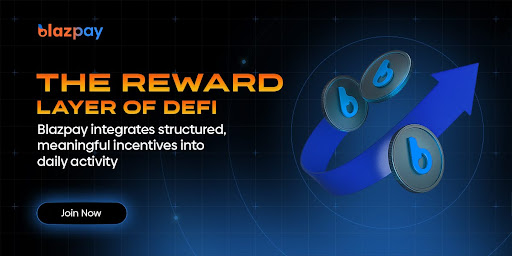
The crypto market continues to evolve with investors seeking high-potential tokens and utility-driven platforms. Among the best presale crypto opportunities, Blazpay stands out in Phase 5, attracting attention as one of the most promising AI crypto coins. Alongside established cryptocurrencies like Bitcoin and BNB, the presale offers an early entry point with asymmetric upside potential, making it a key focus for anyone evaluating the next crypto coins to buy
Blazpay Presale Phase 5 – The Smart Move for Crypto Investors
Blazpay has officially started Phase 5, with the price currently set at $0.0135 and scheduled to increase to $0.0135 after this phase closes. So far, 236M of the 249.04M BLAZ tokens have been sold, with $2.04M already raised. With AI-enhanced utilities, multichain support, and gamified services, Blazpay positions itself as a leading presale token among the best crypto presale platform options today.

Gamified Rewards and Perpetual Trading Benefits
Blazpay’s ecosystem combines gamified engagement with perpetual trading options. Investors are incentivized to complete milestones, participate in AI-driven tasks, and maintain long-term activity within the platform. The integrated AI provides automated trading suggestions, while multichain connectivity ensures fast, low-fee transactions across networks, making Blazpay a unique AI crypto coin presale with tangible utility.
Blazpay Referral Program – Rewarding Early Advocates
The Blazpay referral system allows investors to earn rewards whenever their referrals participate in the presale. This creates a compounding incentive for early adopters to expand their network and increase their token allocation, especially valuable during Phase 5, where the price is set to rise shortly.
Blazpay Price Prediction – Growth Potential in 2025
Industry analysts suggest that Blazpay’s Phase 5 presale positions the token for potential substantial gains post-launch. With AI-driven utilities, gamified rewards, and growing investor demand, projections suggest Blazpay could achieve significant milestones relative to established cryptocurrencies. Early-phase investors are particularly well-positioned to capitalize on future price movements.
Blazpay $2,000 Strategy – Early Entry Advantage
A $2,000 purchase during Phase 5 at $0.0135 secures roughly 170,213 BLAZ tokens. If the token reaches $0.05, the position grows to $8,511. At $0.10, it rises to $17,021. Should Blazpay hit $0.25, the investment could be worth $42,553. This demonstrates the asymmetric upside for early participants, making Phase 5 a key entry window.
How to Buy BLAZ
To participate before the Phase 4 supply sells out:
- Visit the official Blazpay presale page
- Connect your wallet (MetaMask, Trust Wallet, Coinbase Wallet)
- Select your preferred currency (ETH, BNB, USDT, SOL)
- Enter the amount you want to purchase
- Confirm the transaction and claim tokens after launch
Bitcoin (BTC) – Leading Crypto Coin to Buy for Institutional Exposure
Bitcoin (BTC) is trading at approximately $87,822 USD as of December 17, 2025, up 1.63% from the previous day. The digital asset continues to dominate the market, offering investors exposure to a proven store of value and hedge against inflation. Despite being 17% below last year’s highs, BTC shows strong institutional interest, with long-term holder supply at an 8-month low of 14.34 million BTC. With potential ETF inflows and ongoing adoption, Bitcoin remains one of the top crypto coins to buy for those seeking stability with growth potential in the digital asset space.
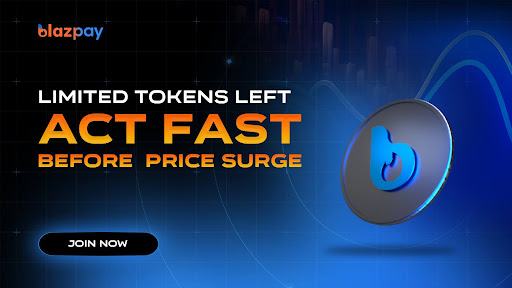
BNB – Established Blockchain Token Among Top Crypto Coins to Buy
BNB is holding steady around $857 USD, supported by $2.6 billion in 24-hour trading volume. The BNB Chain ecosystem continues expanding with initiatives like a new stablecoin targeting institutional usage, strengthening its utility in decentralized finance and trading platforms. While short-term fluctuations occur, BNB’s consistent network adoption and high liquidity make it a strong candidate among crypto coins to buy for investors looking to combine platform utility with long-term potential.
Conclusion
Blazpay’s Phase 5 presale offers investors the chance to access one of the most promising AI crypto coins early, with multichain utility and gamified rewards driving strong adoption. Complementing BTC’s store-of-value role and BNB’s utility-focused growth, this trio represents a strategic combination of new and established crypto assets. For investors seeking asymmetric potential alongside reliable blockchain leaders, Blazpay, Bitcoin, and BNB remain top crypto coins to buy in 2025.
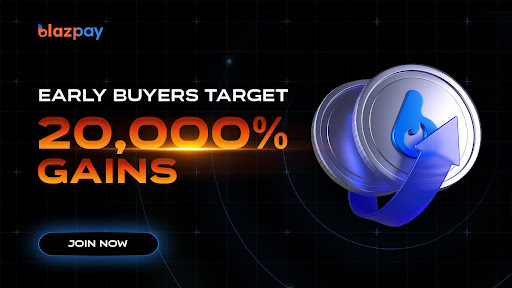
Join the Blazpay Community
Website: www.blazpay.com
Twitter: @blazpaylabs
Telegram: t.me/blazpay
FAQs
Q1. What makes Blazpay stand out among new crypto coins?
Its AI-enhanced automation, gamified services, and cross-chain capabilities differentiate it from traditional presale tokens.
Q2. How can I participate in Blazpay Phase 5?
Investors can buy BLAZ tokens via the official presale platform using the integrated steps for wallet connection and token purchase.
Q3. Why include Bitcoin and BNB in a presale portfolio?
BTC offers long-term stability, while BNB provides utility exposure in a major ecosystem, complementing early-stage tokens like Blazpay.
Q4. What is the risk/reward profile of Blazpay?
High potential upside due to Phase 5 presale pricing and AI-powered utility, balanced against typical early-stage crypto volatility.
Q5. How long until the next Blazpay price increase?
Phase 5 has just started, and the price will rise from $0.0135 to $0.0155 after completion.
-

 Crypto3 years ago
Crypto3 years agoCardalonia Aiming To Become The Biggest Metaverse Project On Cardano
-

 Press Release5 years ago
Press Release5 years agoP2P2C BREAKTHROUGH CREATES A CONNECTION BETWEEN ETM TOKEN AND THE SUPER PROFITABLE MARKET
-
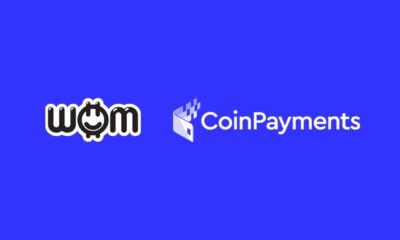
 Blockchain5 years ago
Blockchain5 years agoWOM Protocol partners with CoinPayments, the world’s largest cryptocurrency payments processor
-

 Press Release5 years ago
Press Release5 years agoETHERSMART DEVELOPER’S VISION MADE FINTECH COMPANY BECOME DUBAI’S TOP DIGITAL BANK
-
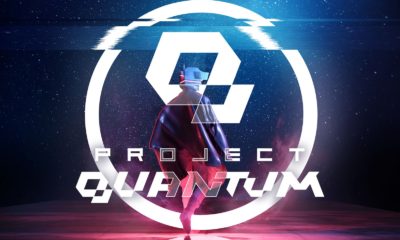
 Press Release5 years ago
Press Release5 years agoProject Quantum – Decentralised AAA Gaming
-

 Blockchain5 years ago
Blockchain5 years agoWOM Protocol Recommended by Premier Crypto Analyst as only full featured project for August
-

 Press Release5 years ago
Press Release5 years agoETHERSMART DEVELOPER’S VISION MADE FINTECH COMPANY BECOME DUBAI’S TOP DIGITAL BANK
-

 Blockchain6 years ago
Blockchain6 years ago1.5 Times More Bitcoin is purchased by Grayscale Than Daily Mined Coins






